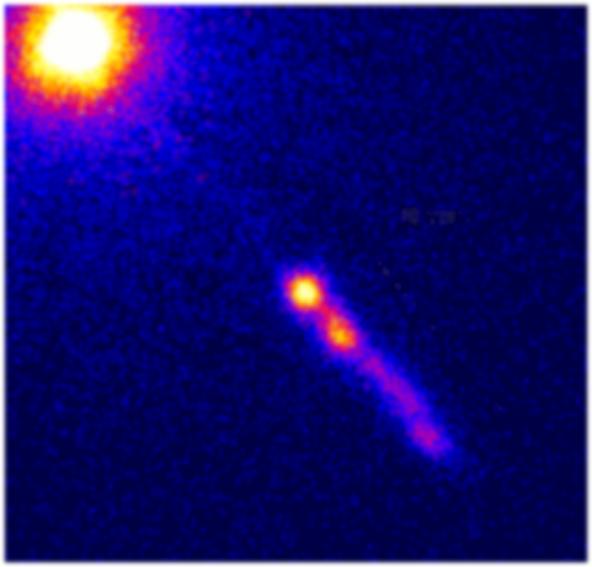
 Credit: NASA/CXC/SAO/H. Marshall et al.
Credit: NASA/CXC/SAO/H. Marshall et al.
On the trail of a Cosmic Jet
Active galaxies produce tremendous amounts of energy from an extremely
small region in the center, a region usually called the nucleus of the
galaxy. The process behind this is not very clear, but astronomers think
that these active galaxies all contain a supermassive black hole in their
centers, which swallows stars and gas clouds and converts gravitational
energy to radiation. Often active galaxies show bright, narrow "jets" of
emission from their nuclei. One famous example of this is the "quasar"
(quasi-stellar radio object) 3C273. A new image of
3C273 by the Chandra X-ray
observatory (shown above) shows the active nucleus of the galaxy (in
the upper left) as a bright source of X-rays, and shows a narrow jet of
X-rays pointing from the nucleus and stretching for hundreds of thousands
of lightyears from the quasar. The Chandra image reveals for the first
time the presence of faint X-ray emitting material connecting the core of
the quasar to the jet. This observation and others like it will help
astronomers understand the mysterious powerhouse at the centers of active
galaxies.
Last Week *
HEA Dictionary * Archive
* Search HEAPOW
* Education
Each week the HEASARC
brings you new, exciting and beautiful images from X-ray and Gamma ray
astronomy. Check back each week and be sure to check out the HEAPOW archive!
Page Author: Dr. Michael F.
Corcoran
Last modified November 9, 2000


